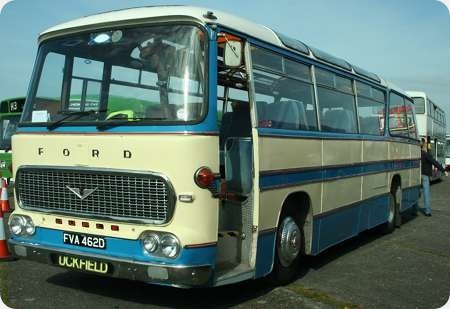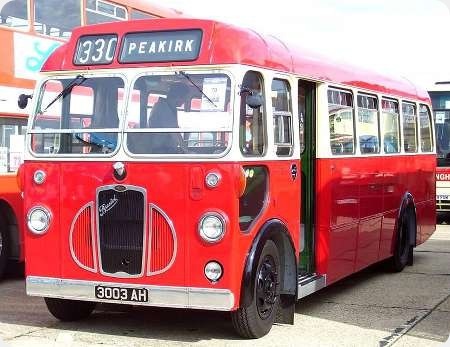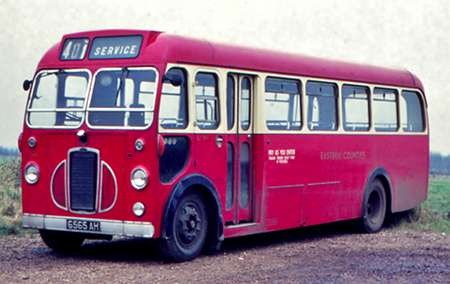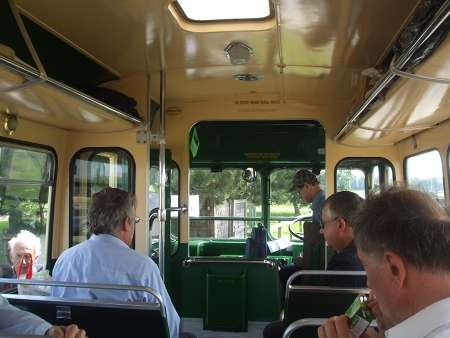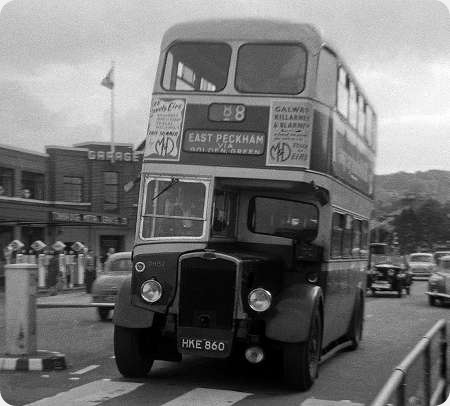
Maidstone & District Motor Services Ltd
1945
Bristol K6A
Weymann H30/26R
In the years before the BAT-Tilling rift in 1942, the Maidstone & District company developed quite a liking for the Bristol double deck chassis. Initially, the GO5G type was tried, 12 going to the main fleet and 4 to the Chatham & District subsidiary in 1936. They did not impress. The bodies were removed in 1938 and the chassis were sold on to Bristol Tramways. Despite this inauspicious start, Chatham & District then took 41 with highbridge bodies and Maidstone & District 12 with lowbridge bodies of the new K5G type from the end of 1938 up to the outbreak of war in September 1939. When Tilling and BET split, Tilling group fleets retained the policy of standardising on Bristol/ECW machinery, whilst the BET companies sourced their vehicles from various manufacturers. However, the exigencies of wartime production did not grant the indulgence of much choice in such matters and operators largely had to take what they were given, though the Tilling companies preferred to minimise their intake of non Bristol double deck machinery. Nevertheless, Chatham and District managed to obtain 5 and Maidstone & District 7 examples of the total of 85 unfrozen K5G buses produced in 1942. Towards the end of the war, matters were relaxed to a certain degree, and, within the limitations on offer, operators were able to express a preference for the model that best fitted into the fleet profile, though this was not always heeded by the authorities. During and immediately after the war, the Bristol concern produced a limited number of utility K type buses in three sanctions, but these lost the 5LW engine in favour of the 6 cylinder AEC A202, a version of the 7.7 (actually of 7.58 litres) specifically designed to fit in place of the Gardner. The W1 sanction consisted of 150 chassis, the W2 of 100, and W3 of 200. The W1 and W2 sanctions were equipped with the earlier style of high mounted radiator, but the W3 buses had the new lower mounted PV2 bonnet and radiator. Maidstone and District became an enthusiastic operator, accepting 30 of W1, 19 of W2 and 5 of W3. After the war, Maidstone and District continued to take deliveries of the K6A until the sale of the Bristol company to the government led to the withdrawal of that make from the open market. In recognition of the qualities of the Bristol chassis, Maidstone & District embarked upon a rebodying programme for the unfrozen K5G and utility K6A fleet, but the pre war examples were sold out of service in the mid 1950s. The rebodied K5Gs retained their high mounted radiators, but the rebodied W1 and W2 sanctions of K6As were fitted with the low mounted PV2 radiator. In most cases, new H30/26R bodywork of very attractive design was supplied by Weymann, but the later rebuilds received the decidedly less appealing Orion type. Curiously, many of the later buses of 1946/7/8, which retained their original bodywork to the end, were sold out of service earlier than the rebodied wartime machines. The photograph above shows chassis number W2.038, DH 152, HKE 860 of 1945 with a PV2 radiator and Weymann H30/26R body that replaced the original high radiator and Duple H30/26R in May 1953. It is seen in Tonbridge in 1960 on its way to the village of East Peckham, once a major centre of the hop growing industry. This bus stayed in the Maidstone and District fleet until 1966.
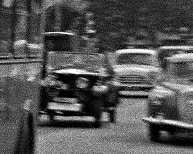
Sadly the limitations of the Comet S camera lens prevent me from identifying the splendid car following the bus.
Photograph and Copy contributed by Roger Cox
16/03/15 – 06:50
What a fantastic shot. The long since built over Tonbridge Garage had several examples of these old Bristols which seemed to have been used to cover just about anything (at Tunbridge Wells they had distinct allocations).
Route 88 was allocated OMO Reliances and provided a useful connection to the nearest major hospital at Pembery, and connected with route 33 at the East Peckham end of the route.
On the offside is the road taken by Tonbridges regular Bristol allocation, Route 100, a 20 minute frequency town service with LL6A single deckers.
Patrick Armstrong
17/03/15 – 16:51
Wonderful-looking decker, and I bet the reality was just as good as the appearance. I was momentarily fooled by the "East Peckham" destination and imagined that the bus was on hire to London Transport, but somehow the landscape seemed not to bear that out, so I googled E. Peckham and found it just to the west of the Paddock Wood–Maidstone railway line—the very line I hope to use to get to the SE Bus Festival on the 28th of March.
Has any of our members been to this event, and if so how d’you rate it? The list of vehicles expected to attend looks very impressive. Last time I went to Maidstone was to see the trolleybuses before they disappeared, so I’m a bit out of date.
Ian T
18/03/15 – 07:01
Lovely photo and attractive bus. It was a very sensible conversion job by M&D. However, it always looks odd to me to see Bristol K’s without ECW bodies!
Chris Hebbron
18/03/15 – 07:02
There can’t have been a world of difference between the Bristol K6A and the AEC Regent II. Presumably the Bristol gearbox and transmission produced a somewhat different sound but surely the performance would have been similar? Is there anyone who has experience of driving both?
Chris Barker
19/03/15 – 07:18
Ian T:
IMO, the South East Bus Festival is definitely worth attending. The site is huge and features a perimeter road used by some of the vehicles to give rides to the public.
The vehicles are not jammed in lines and there are good photographic opportunities.
There is spacious covered accommodation for sales stalls and displays such as models, slide shows and there are talks by professional busmen – Roger Davies of Classic Bus fame has appeared, for example.
Plenty of other vehicles such as lorries, tractors and classic cars are also on display.
You can find a list of bus entries on the Arriva website and will see sister vehicle HKE 867 has been entered. It usually is on the free rides circuit so you should be able to sample it!
One last bit of advice – wear warm clothing and bring your own refreshments! The site is on the top of the North Downs and can be breezy.
Malcolm Boyland
21/03/15 – 07:03
I would also agree that the South East Bus Festival is worth attending. Where else can you have a ride on a pre-war Leyland Titan and the latest hybrid?
Nigel Turner
21/03/15 – 15:44
Malcolm and Nigel: many thanks for you info and advice.
The event sounds too good to miss.
Chris B: I’ve never driven a K6A but I’ve been lucky enough to ride the very lively Thames Valley 446 (DBL 154). Bus engineer pal Graham Green of Reading reckons that the AEC 7.7 goes better in other makers’ vehicles than it does in AEC’s own. I’m sure the 5-speed gearbox in the Thames Valley K6A reinforces that impression. How does the Daimler CWA6 compare with the CWD6? My guess is that the Daimler engine’s 13% greater capacity gives little advantage in performance.
Ian T
22/03/15 – 06:43
There is a (very) short video of the sound of a restored Lincolnshire K6A at this site (scroll to the bottom):- www.lvvs.org.uk/dbe187.htm
The engine was rigidly mounted in both the K6A and the Regent II, but the mellow sounding Bristol constant mesh gearbox contrasted with the scream of the AEC straight cut gear D124 crash gearbox. Both types employed the triple servo braking system, and both, again, were noted for relatively light steering characteristics.
The Daimler CD6 had a capacity of 8.6 litres and a nominal output of 100bhp at 1750 rpm, but the quality varied greatly between individual examples. Like the contemporary and even more problematical Crossley HOE7 engine of identical bore and stroke (copied from the pre war Leyland unit), it performed best in single deck chassis. However, OBP does have an expert who can give an informed opinion of the Daimler engine from personal experience. Please step forward Chris Youhill.
Roger Cox
22/03/15 – 06:43
Very interesting piece particularly as I once owned an ex Hants & Dorset 1945 K6A open topper fitted with an AEC engine (see my description under ‘Hants & Dorset 1945 Bristol K6A‘).
By the way, the touring car following the bus is almost certainly a Riley Nine from the early to mid 1930’s.
John Barringer
22/03/15 – 09:20
I am sure that you are right about the Riley, John. On the first Sunday in October each year I travel down from East Anglia to the old Croydon Airport building for an ATC reunion. A fellow "old cadet" brings his splendid open tourer Riley Nine in British Racing Green. I plan to get one when I win the Lottery – not this week, sadly (can you believe that the same thing happened last week as well?!).
Roger Cox
22/03/15 – 14:25
Well done, John B, for identifying the car as a Riley Nine – my frustrations are over! There was always something special (and quirky) about Rileys, before the advent of ‘badge engineering’!
Roger C – I’ve said before that I grew up in the Morden that was LTE’s Daimlerland post-war. I recall that on the front inside of the driver’s cab above the windscreen of D140 was the chalk message, "D140, the fastest D of them all". It was one of the dozen CWD’s in the 281-strong fleet. You could always tell the CWD’s from the CWA’s, because the inspection holes in the bonnet-sides of each type were in a different place. So there might have been some extra performance with them.
Of course, any advantage disappeared when the engines were replaced by more driver/maintenance-friendly ex-STL AEC engines, around 1950!
Chris Hebbron
23/03/15 – 07:08
Doncaster had some K6A’s and CVD6’s of similar post-war -1948- vintage. The Bristols seemed confined to the straight up and down former tram Highfields route whilst the Daimlers went further and served the more varied and longer Skellow routes. I am prompted to note this because Roger reminded me of the agonised sound of the AEC gearbox and the impression of great revs in a short time on starting off, without any great forward progress. The Daimlers on the other hand seemed much more refined and even speedy: unfortunately their smell of hot diesel at rest, especially with the special cooling device (engine side panel resting on mudguard) in use cannot be replicated on this site- roll on smellerama…
Joe
25/03/15 – 16:25
Just a note about the car identified above. It is a 1929/30 Riley Model 9 Tourer as you have recalled. It is an early car and is a desirable "Eligible" car for Vintage Sports Car Club membership events. In good condition they are a delight to drive as was/is my 1937 12/4 Falcon version!
Richard Leaman
10/10/18 – 05:15
What is also interesting is the different styles of Weymann body fitted. The post war KKK Bristols (apart from one) had what was the post war equivalent of the pre war five bay Weymann body (similar to the LT post war STLs). Some of the HKE rebodyings had the same style. There then followed the 1951/2 version (as above) which had deeper windows. This style was also fitted to the rebodied Guys (again except one) and Daimlers as well as the high radiator Chatham Traction K5Gs. There then followed the 1953 four bay style (as exemplified by the preserved K6A) and then finally the Orion. The last two body styles were only fitted to the low radiator Bristol K6As. The LKT lowbridge Bristol K6As also had a lowbridge version of this style of bodywork fitted from new. All the vehicles were 7 foot 6 inches wide requiring a special narrow version of the Orion body.
Gordon Mackley
